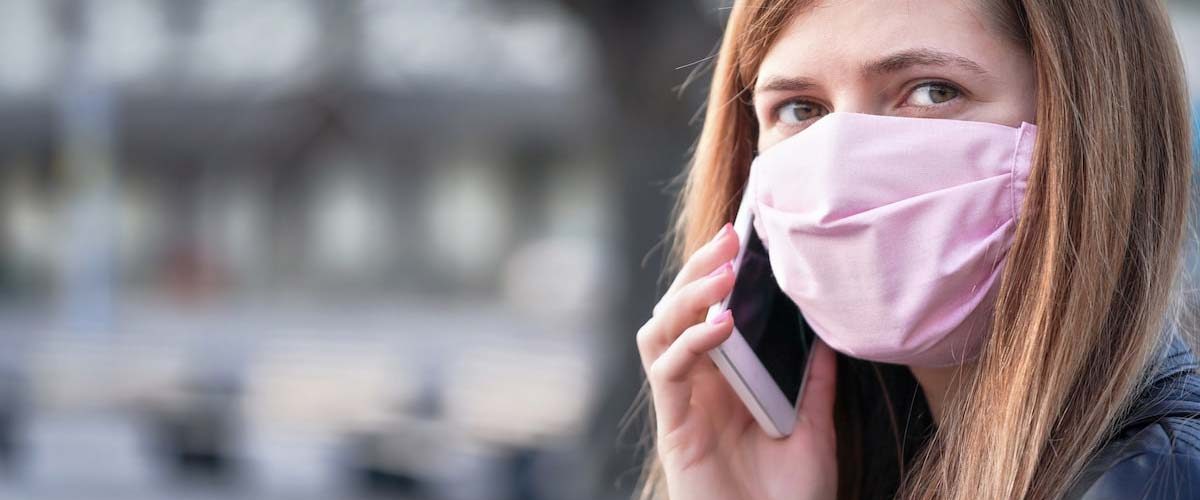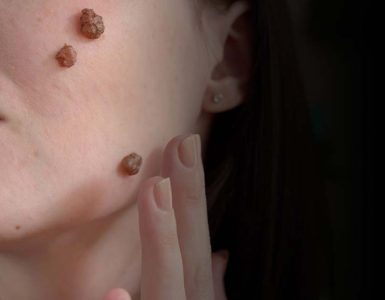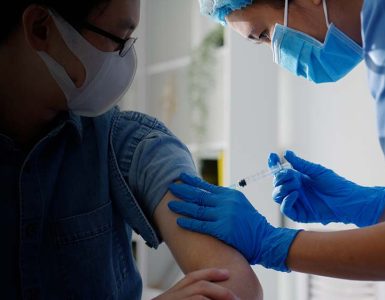The continued increase in COVID-19 infection around the world has led scientists from many different fields, including biomedicine, epidemiology, virology, fluid dynamics, aerosol physics, and public policy, to study the dynamics of airborne transmission.
In Physics of Fluids, by AIP Publishing, researchers from Johns Hopkins University and the University of Mississippi used a model to understand airborne transmission designed to be accessible to a wide range of people, including nonscientists.
Employing basic concepts of fluid dynamics and the known factors in airborne transmission of diseases, the researchers propose the Contagion Airborne Transmission (CAT) inequality model. While not all factors in the CAT inequality model may be known, it can still assess relative risks since the situational risk is proportional to the exposure time.
The researchers determined protection from transmission increases with physical distancing in an approximately linear proportion using the model.
“If you double your distance, you generally double your protection,” said author Rajat Mittal. “This kind of scaling or rule can help inform policy.”
The scientists also found even simple cloth masks provide significant protection and could reduce the spread of COVID-19.
“We also show that any physical activity that increases the breathing rate and volume of people will increase the risk of transmission,” said Mittal. “These findings have important implications for the reopening of schools, gyms, or malls.”
The CAT inequality model is inspired by the Drake equation in astrobiology and develops a similar factorization based on the idea that airborne transmission occurs if a susceptible person inhales a viral dose that exceeds the minimum infectious dose.
The model includes variables that can be added at each of the three stages of airborne transmission: the generation, expulsion, and aerosolization of the virus-containing droplets from the mouth and nose of an infected host; the dispersion and transport via ambient air currents; and the inhalation of droplets or aerosols and the deposition of the virus in the respiratory mucosa in a susceptible person.
The researchers hope to look more closely at face mask efficiency and the transmission details in high-density outdoor spaces. Beyond COVID-19, this model based on CAT inequality could apply to the airborne transmission of other respiratory infections, such as flu, tuberculosis, and measles.
Coronavirus volunteers: Greater satisfaction thanks to online platforms
Shortly after the lockdown began, many volunteers signed up to help people in coronavirus risk groups – primarily via online platforms. A study by the University of Basel has found that websites such as these can positively impact the mobilization, willingness, and satisfaction of volunteers, including in the longer term.
Right at the start of the COVID-19 pandemic, the importance of volunteer work became abundantly clear: thousands and thousands of people signed up spontaneously – and generally outside of formal structures – to buy groceries for others or to help in another way, such as by supporting the public health system. Unlike in previous crises, everyone involved faced the same risk of becoming infected. Therefore, their efforts were generally organized through various online platforms that matched up volunteers with people in need.
Offers of help significantly exceeded demand
On all of the platforms, the offers of help far exceeded demand. Researchers from the Center for Philanthropy Studies CEPS at the University of Basel have worked with colleagues from the University of Freiburg and the ZHAW in Winterthur to study the importance of online platforms to the motivation and willingness of volunteers. They have reported their findings in the journal Nonprofit and Voluntary Sector Quarterly.
The researchers’ survey of a sample of 565 volunteers from a significant platform reveals that online placement can help channel the oversupply of volunteers and thus reduce unrealistic expectations. By providing information on safety and health matters during participation in voluntary work, the coronavirus platforms also positively impacted volunteer satisfaction.
Moreover, the satisfaction of active volunteers was higher, the more afraid they were catching the virus. According to the researchers, one possible explanation for this is that volunteer work boosted the volunteers’ self-confidence -even more so when they believed themselves to be at greater risk.
Willingness to commit in the long term
“Greater satisfaction gained from spontaneous volunteering means people are more willing to commit to long-term volunteering opportunities at a later stage,” says Professor Georg von Schnurbein, associate professor of foundation management at the University of Basel and co-author of the study. “Volunteer work is immensely important for our society – not only in times of crisis.”
He highlights the importance of long-term commitment in many social areas, such as health and social services, cultural activities, and youth work. According to the most recent survey, 665 million hours of volunteer work were completed in Switzerland in 2013, while paid work in the entire health and social services sector amounted to 853 million hours.
New COVID-19 related genes — helpful and harmful — found in massive screen
Researchers at Yale University and the Broad Institute of MIT and Harvard screened hundreds of millions of cells exposed to the COVID-19 and MERS viruses. They identified dozens of genes that enable the viruses to replicate in cells and those that seem to slam the door on the virus.
The pro-viral and anti-viral role of these genes will help guide scientists in developing new therapies to combat COVID-19, the researchers say.
The findings were reported Oct. 26 in the journal Cell.
Scientists have previously identified how the SARS-CoV-2 coronavirus, which causes COVID-19, attaches to and invades cells, but less is known about why some cells are more susceptible to infection. Understanding the genetics behind the host cells’ susceptibility to infection may explain why some people exposed to the virus experience few or no symptoms, and others become extremely ill or die.
For the study, researchers performed a genome-wide screen of a line of green monkey cells, which are more likely to die after exposure to SARS-CoV-2 than commonly used human cell lines. For the first time, the screens allowed researchers to track the interactions of virus and cells simultaneously. The screens confirmed earlier findings that the ACE-2 gene encodes a receptor on the cell surface and promotes infection by SARS-CoV-2.
However, the screens also identified two new pro-viral protein complexes and a third, which helps prevent infection. They found that the SWI/SNF complex, which turns genes on and off, and HMGB1, which has a myriad of functions, including inflammation regulation, were linked to increased cell death after infection.
The researchers then introduced small molecule drugs that inhibit the function of two of the identified gene products and found they could increase cells’ survival after infection in a dish.
By contrast, the histone H3 complex, which helps regulate the expression of genes within the cell nucleus, seemed to provide a protective effect, inhibiting the ability of SARS-CoV-2 to infect and kill cells.
“It is essential to understand the wide variation of responses to COVID-19, for instance why advanced age makes it much more likely that people will die,” said Yale’s Craig Wilen, assistant professor in laboratory medicine and immunobiology and corresponding author of the paper. “We have identified both proviral and antiviral genes that may help us predict who is likely to get severely ill and what kind of drugs would be helpful or detrimental in treating patients.”
Wilen noted the information might help the current pandemic and help prepare for outbreaks of future emerging coronaviruses.
















Add comment